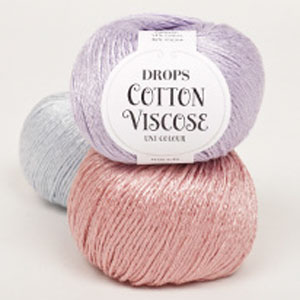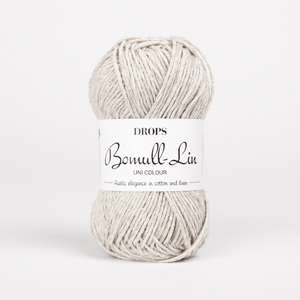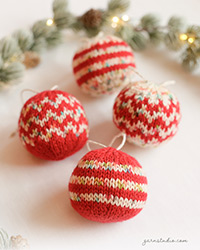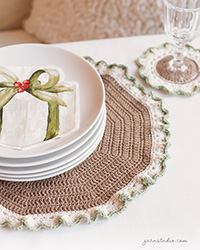Comments / Questions (68)
![]() Elva Anderson wrote:
Elva Anderson wrote:
Do you use two strands thru the whole pattern? Brim one or two strands.
11.05.2022 - 22:09DROPS Design answered:
Hi Elva, You work the whole pattern with 2 strands. Happy crocheting!
12.05.2022 - 06:59
![]() Mascha wrote:
Mascha wrote:
Vielen Dank für die schnelle Antwort! :-) Das Viskose-Garn ist nicht mehr lieferbar; könnte ich stattdessen 2 Fäden Bomull-Lin verwenden?
09.05.2022 - 08:56DROPS Design answered:
Liebe Mascha, DROPS Cotton Viscose gehörte der Garngruppe A, am besten benutzen Sie unseren Garnumrechner um eine Alternative zu finden - gerne kan Ihnen Ihr DROPS Laden auch damit - auch telefonisch oder per E-Mail - weiterhelfen. Viel Spaß beim häkeln!
09.05.2022 - 12:41
![]() Mascha wrote:
Mascha wrote:
Wird hier zweifädig gehäkelt? Für Bomull-Lin allein wird Nadelstärke 5 empfohlen, und hier wird nur 4 verwendet... - Könnte man den Hut auch nur aus Bomull-Lin arbeiten?
07.05.2022 - 00:10DROPS Design answered:
Liebe Mascha, der Hut wird mit je 1 Faden jeder Qualität (= Bomull-Lin + Cotton Viscose) gehäkelt, er wird etwas fester als üblig gehäkelt, also Häkelnadel Größe je nach Ihrer eigenen Maschenprobe anpassen - hier lesen Sie mehr. Viel Spaß beim häkeln!
09.05.2022 - 08:23
![]() Lisen Hillestad wrote:
Lisen Hillestad wrote:
Goddag😍. Hba betyr «stb» i omg. 9, gjentatt i rettelsen -?
21.04.2021 - 18:23DROPS Design answered:
Hej Lisen. Vi menar st (ikke stb), detta har nu rättats i texten. Tack för info! Mvh DROPS Design
22.04.2021 - 07:25
![]() Evelyne Beijer wrote:
Evelyne Beijer wrote:
Hallo. Ik heb een vraag over de dame die model staat voor de hoed. De trui die zij aanheeft is dat een patroon van jullie?
18.03.2021 - 16:45DROPS Design answered:
Dag Evelyne,
Eerlijk gezegd weet ik dat niet, het zou best kunnen. Mar ik heb even gezocht en ik kan hem niet vinden in de collectie.
21.03.2021 - 11:14
![]() Sherry wrote:
Sherry wrote:
On the DROPD woman’s hat a question again please.....#107-14 round 9, is there a count on how many cross double crochet sets there are? Thank you for helping me!!!I am on the 2nd set of rows 7-9. 👏🏻👏🏻👏🏻
11.01.2020 - 20:08DROPS Design answered:
Dear Sherry, since you will crochet 1 dc in each dc from previous row (just crossed) there will be the same number of dc as you had sc previously, but there will be half the number of these X (= 1 X = 2 dc). Hope it helps. Happy crocheting!
13.01.2020 - 09:19
![]() Sherry wrote:
Sherry wrote:
On a woman’s hat DROPS 107-14. I am stuck on round 9. I did buy my yarn from DROPS on line. I have started this project many times and I still do Not get the written instructions.
08.01.2020 - 01:16DROPS Design answered:
Dear Sherry, this video shows how to work this kind of double crochets, ie you cross them: at the beg of the round, replace 1st dc with 3 ch and work 1 dc in last dc from previous round, then always skip 1 ch, 1 dc in next dc, 1 dc in skipped dc. Hope this helps. Happy crocheting!
08.01.2020 - 09:20
![]() Cindy wrote:
Cindy wrote:
I am not a big "crocheter" but your pattern and explanations are so good! Reading and studying it the 1st time seems to be Greek but with your videos and comments from other Crocheters, whow!! Even i now know how to crochet a Treble Cross Stick - after watching your video. thank you for making it easier for the beginner to enjoy, Sunny South African hugs Cindy
13.11.2019 - 13:39
![]() Paola wrote:
Paola wrote:
Salve, dopo il giro n.9 occorre fare un giro di maglie basse e poi ripetere il giro n7 e n9? Grazie
04.08.2019 - 16:12DROPS Design answered:
Buongiorno Paola. Dopo il giro 9 ripete i giri 7,8 e 9, altre 2 volte. Non occorre fare un giro di maglie basse. Buon lavoro!
04.08.2019 - 16:30
![]() Anette Stokland wrote:
Anette Stokland wrote:
Hva betyr stb i omgang 9 og hvordan tar man 3 luftmasker i en fm?
28.07.2019 - 23:07
To the Sun#tothesun |
|
|
|
|
Crochet DROPS hat in “Cotton Viscose” and “Bomull-Lin”. Size S/M – M/L.
DROPS 107-14 |
|
|
Crochet info: Replace the first tr on row with 3 ch. Replace first dc on row with 1 ch. Finish all rows with 1 sl st in first st. Hat: Round 1: Crochet 4 ch with crochet hook size 4 mm with 1 thread of each yarn quality, then 7 tr in the first ch, finish with 1 sl st in third ch = 8 tr Round 2: Read Crochet info! 2 tr in each tr = 16 tr Round 3: 2 tr in each tr = 32 tr Round 4: *1 tr in first tr, 2 tr in next tr*, repeat from *-* = 48 tr Round 5: *1 tr in each of the first 2 tr, 2 tr in next tr*, repeat from *-* = 64 tr Round 6: 1 tr in each tr, but inc 6-12 tr evenly distributed = 70-76 tr Round 7: 3 ch (= 1 tr), 1 ch, *skip 1 tr, 1 tr in tr, 1 ch*, repeat from *-* = 35-38 tr Round 8: *1 dc in ch, 1 dc in tr*, repeat from *-* = 70-76 dc Round 9: 3 ch in 1st dc, 1 tr back in last dc on previous round, 1 tr in 3rd dc, 1 tr back in second dc, 1 tr in fifth dc, 1 tr back in fourth dc, continue like this and end round with a sl st in the 3rd ch in beg of round (= cross-tr). Repeat round 7- 9 another 2 times. Round 16: 1 dc in each tr, at the same time inc 12-12 dc evenly = 82-88 dc Round 17 and 18: 1 dc in each dc, at the same time inc 5-5 dc evenly on each round = 92-98 dc. Round 19- 24: 1 dc in each dc Round 25: 1 dc in each dc, at the same time inc 16-18 dc evenly = 108-116 dc Round 26: 1 dc in each dc Round 27: 1 dc in each dc, at the same time inc 16-18 dc evenly = 124-134 dc. Continue with 1 dc in each dc until piece measures approx 29-30 cm from the top. Cut the thread and fasten. |
|
Have you finished this pattern?Tag your pictures with #dropspattern #tothesun or submit them to the #dropsfan gallery. Do you need help with this pattern?You'll find 8 tutorial videos, a Comments/Questions area and more by visiting the pattern on garnstudio.com. © 1982-2025 DROPS Design A/S. We reserve all rights. This document, including all its sub-sections, has copyrights. Read more about what you can do with our patterns at the bottom of each pattern on our site. |








































Post a comment to pattern DROPS 107-14
We would love to hear what you have to say about this pattern!
If you want to leave a question, please make sure you select the correct category in the form below, to speed up the answering process. Required fields are marked *.